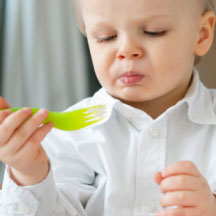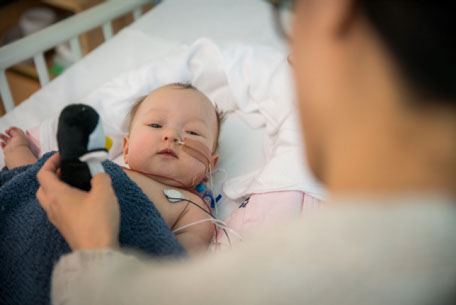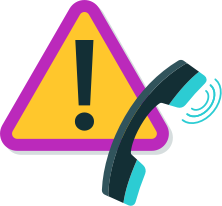 Decreased Appetite and Nutrition
Decreased Appetite and NutritionDecreased Appetite and Nutrition
A decrease in your child's appetite during treatment can keep them from getting the nutrients they need. Ensuring they receive adequate nutrition will be important because it helps support growth and healing throughout the neuroblastoma journey.
Potential causes of decreased appetite
There are many reasons children with cancer may have a decreased appetite or difficulty eating, including:
- Nausea and vomiting
- Diarrhea or constipation
- Mouth sores
- Tumor location
- Changes to taste sense from chemotherapy
- Eating unfamiliar foods while in the hospital
- Depression, dehydration, stress, or pain
- Certain chemotherapy, radiation therapy, and antibody therapy treatments
 Signs and symptoms of decreased appetite
Signs and symptoms of decreased appetiteSigns and symptoms of decreased appetite
When your child’s appetite is decreased, it will be difficult for them to eat enough calories and protein to support their body. This may lead to weight loss.
Treating decreased appetite
Because decreased appetite and weight loss are common during neuroblastoma treatment, your child’s healthcare team will follow your child’s growth (height and weight) regularly. A registered dietitian may work with you and your child to help them maintain or gain weight when necessary.
Some helpful tips you can follow to support your child’s nutrition during therapy include:
Despite everyone’s best efforts, your child may still lose weight during treatment. If the healthcare team determines weight loss is a concern, nutritional supplements or appetite stimulants may be suggested.
Will my child need a feeding tube?
If your child continues to lose weight after exploring different foods and supplements, they may need a feeding tube. A feeding tube is a small, soft tube that is inserted through your child’s nose and goes into the stomach—this is called a nasogastric or NG tube.
- This type of feeding tube can be placed at the bedside by a nurse. It is a relatively quick procedure and does not require surgery. Once the tube is placed, special nutritional formulas will be given through the tube to provide your child with fluid, calories, protein, vitamins, and minerals
- If your child has a feeding tube, you may be taught how to use it at home. Some oral medications may be given through the feeding tube. Once the tube is no longer needed, it can be easily removed. Feeding tubes can be used throughout treatment to help support your child’s nutrition
 Will my child need a feeding tube?
Will my child need a feeding tube?If your child is unable to tolerate food going into the stomach, their healthcare team may order a special solution called total parenteral nutrition (TPN) to be given through your child’s central line.
- TPN is made of 2 liquids: a yellow liquid (contains proteins, carbohydrates, minerals, and vitamins) and a white liquid (contains fats). TPN is usually a short-term method of nutrition until your child is able to eat normally again. TPN may be used during stem cell transplantation.

Please call your child’s healthcare team if your child experiences unexplained weight loss or gain, or is unable to tolerate tube feedings (persistent vomiting or diarrhea).
Learn about the signs and symptoms of other common side effects of treatment and how the healthcare team may manage each.

